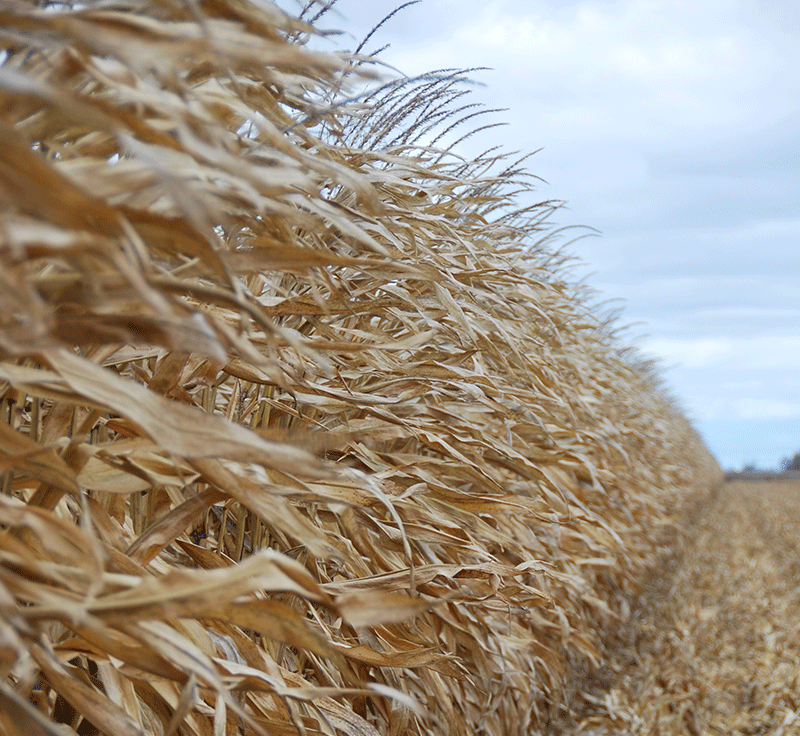U.S. GMO labelling law
AVOIDING A PATCHWORK OF STATE LAWS

THE NATIONAL BIOENGINEERED Food Disclosure Standard aims to establish uniform labeling rules across the United States for foods containing genetically modified (GMO) ingredients.
Signed into law by President Barack Obama in July, it would replace a variety of state-level laws that would otherwise force the food industry to comply with multiple labeling standards. Bills have been introduced in more than 30 states to establish labeling regimes, and a Vermont labeling law took effect this summer.
Richard Wilkins, a Delaware soybean farmer and president of the American Soybean Association (ASA), reels off three major benefits of the federal legislation.
“First and foremost, it preempts state and local jurisdictions from being able to enact a patchwork of different requirements for labeling genetically enhanced products and establishes a federal standard for what the disclosure requirements would be on food packages.”
“Secondly, it says that you must be able to detect a genetically enhanced ingredient [to require a GMO label]. If you can’t detect the presence of a genetic modification, then there’s really nothing to disclose,” he explains.
That provision is important for products such as vegetable oils, starches, and sugars which may be derived from genetically modified plants but where the modification is not expressed in the food ingredient.
Wilkins cites the law’s definition of genetic enhancement as the third major benefit.
“It says there must be some distinguishable difference between a GMO plant and the non-GMO plant. We think that’s valuable because of some of the new modification technologies today such as gene editing technology. It’s not introducing anything that’s not native in the plant genome. Instead, innovators can more quickly derive new and improved plants by being able to identify the genes that are causing a characteristic and silence those that we don’t want.”
“It’s the same thing we do in conventional plant breeding but it doesn’t take so many generations,” Wilkins explains.
Another significant provision of the law stipulates that meat and other animal products do not have to carry a GMO label just because the animals were raised on feed that contained genetically engineered ingredients.
While the ASA and other major agricultural groups like the National Corn Growers Association and the Corn Refiners Association hailed the new law as a positive step, numerous food safety and consumer groups criticized it for “leaving consumers in the dark” and vowed to continue efforts to amend or replace it with a more aggressive labeling system.
The next step in the U.S. legislative process is for the United States Department of Agriculture (USDA) to develop rules that implement the law, a process that will take months. The USDA’s proposed rules will then be published for the public to file comments, which USDA must consider before issuing a final rule.
Once a final rule is issued, it can still be challenged through the U.S. court system. For a topic as controversial as GMO food labeling, this means the debate is far from over.
“The opponents are going to be very active,” says Wilkins. “It’s going to require us to be engaged in both the rule writing and the comment process to make sure the final outcome written by USDA falls within Congress’ intent.”
A complete copy of the law is available on line at www.ams.usda.gov/rules-regulations/gmo at the bottom of the page under Resources.
KEY PROVISIONS
The law requires the secretary of agriculture to establish a nation-wide standard for labeling bioengineered foods. It will affect foods containing ingredients that are genetically modified using recombinant DNA methods and where the modification could not be achieved through conventional breeding or be found in nature.
It will apply to meat, poultry, and egg products only if the most prominent ingredient is subject to federal food labeling requirements in its own right. If the predominant ingredient is broth, stock, or water, then the standard applies only if the second most important ingredient must be labeled.
A GMO label will not be required on meat solely because the animal consumed livestock feed that was produced using biotechnology or that contained biotech ingredients.
The secretary of agriculture will determine how much bioengineered material must be present for a food to be labeled.
The GMO disclosure can be in printed text, by a symbol, or by an electronic or digital link.
There are special provisions for small food manufacturers.
Bioengineered foods that have completed the federal regulatory approval process cannot be treated as safer than or less safer than conventional products simply because they are bioengineered.
The deadline for establishing this standard is two years from July 28. •







